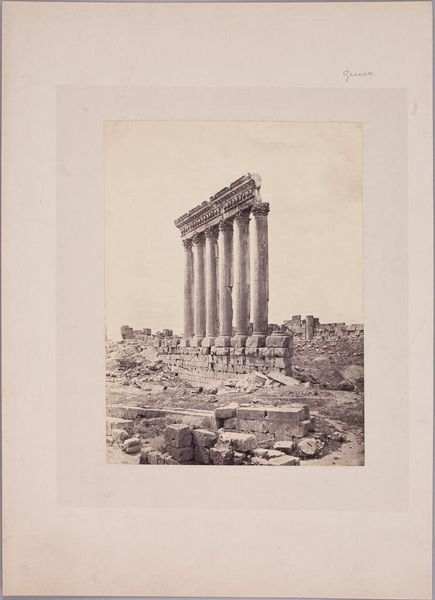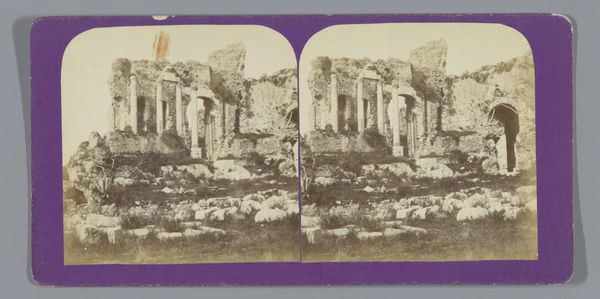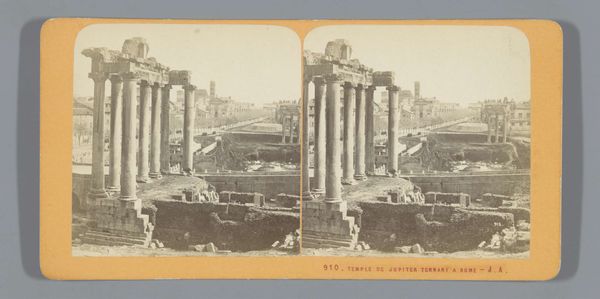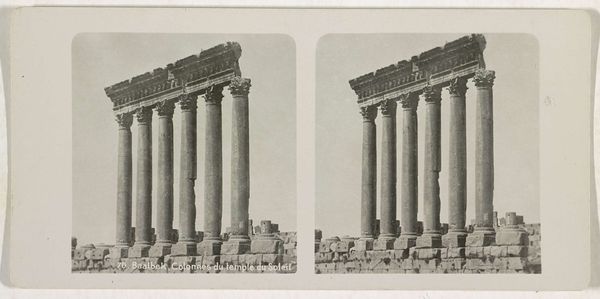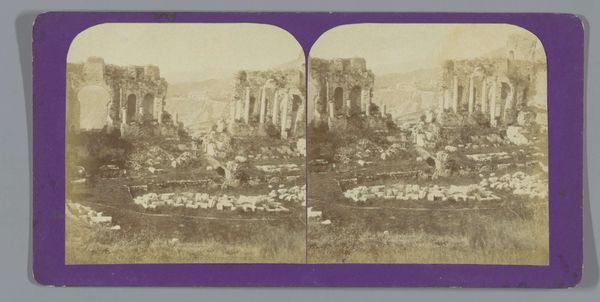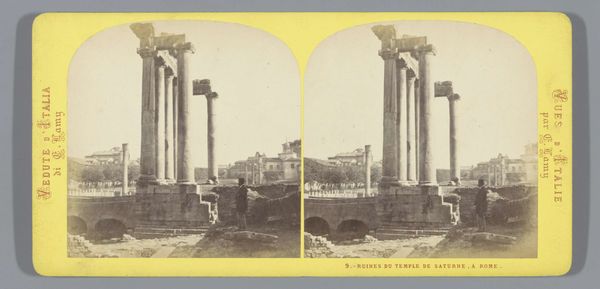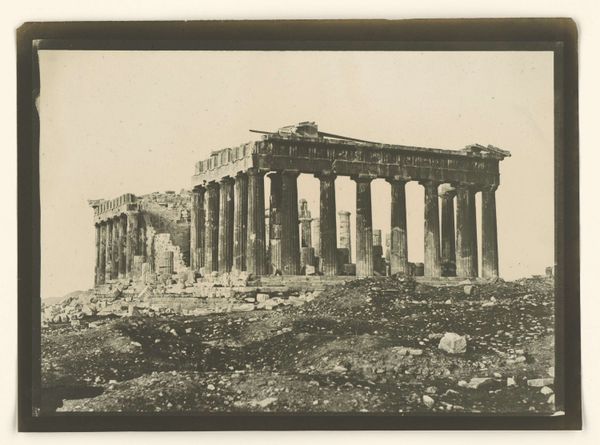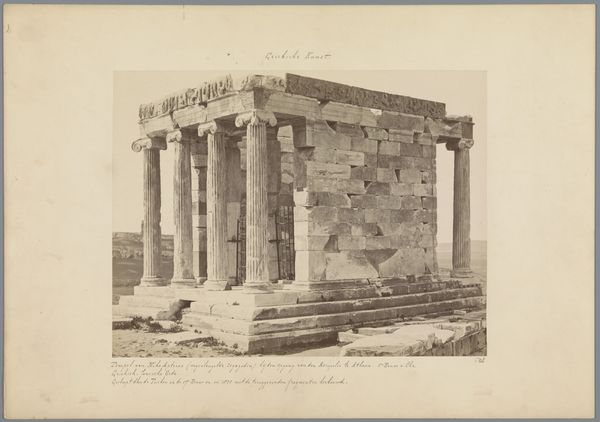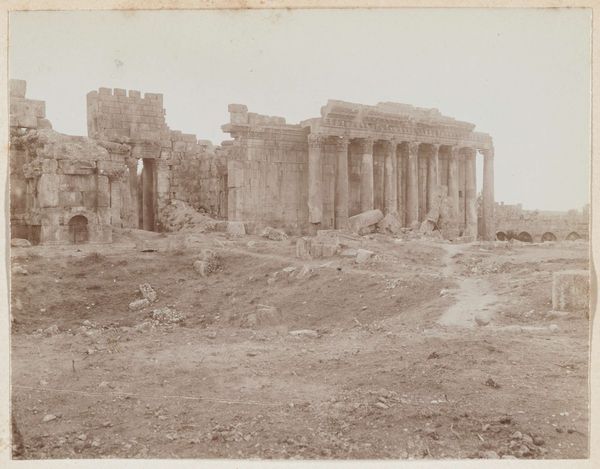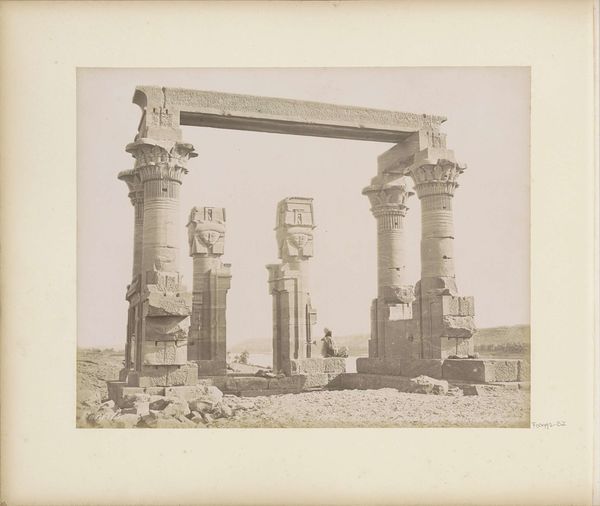
Gezicht op de tempel van Castor en Pollux in de Vallei van de Tempels in Agrigento 1862 - 1876
0:00
0:00
print, photography, site-specific
# print
#
greek-and-roman-art
#
landscape
#
photography
#
ancient-mediterranean
#
site-specific
Dimensions: height 88 mm, width 177 mm
Copyright: Rijks Museum: Open Domain
Jean Andrieu captured this stereoscopic photograph of the Temple of Castor and Pollux in Agrigento. The images were printed using the albumen process, which involves coating paper with egg white to create a glossy surface. This technique, popular in the mid-19th century, allowed for sharp, detailed prints. The albumen print gives the photo a warm, sepia tone that emphasizes the crumbling texture of the ancient ruins. Light and shadow play across the stone, accentuating the erosion caused by centuries of exposure. The image almost feels like an artifact itself, echoing the wear and tear of the temple it depicts. Producing albumen prints was labor-intensive. It demanded careful preparation and precise timing. In a sense, this painstaking process mirrors the original construction of the temple, built by hand with meticulous craftsmanship. Both the ancient stones and the photographic print speak to the human effort involved in their creation, reminding us that art and craft are always embedded in social and historical contexts.
Comments
No comments
Be the first to comment and join the conversation on the ultimate creative platform.
